On two separate trips, in the summers of 1999 and 2000, I walked the Grand Boulevard and Concourse, which marches north from the Major Deegan Expressway to Mosholu Parkway through Mott Haven, Concourse Village, Mount Eden, Mount Hope (the Concourse is constructed on a hill), Fordham, and Bedford Park.
Eleven lanes wide from 161st Street north to Mosholu, the GB&C (shortened to Grand Concourse for the benefit of sign makers and cabbies) was conceived by engineer Louis Risse in 1870 and was built, from 161st Street north, in 1909. In 1927, it absorbed Mott Avenue, which ran from 138th north to 161st, and the older street was widened. The Grand Concourse became the Bronx’s showpiece as the Bronx Borough Hall, Yankee Stadium, and an array of elegant apartment buildings were constructed along its length.
We’ll travel from the Deegan north to the Mosholu and point out some of the highlights, and in true Forgotten tradition, some of the wild cards as well, on the grandest Bronx street ever conceived!
SOURCE OF THE ‘COURSE
The Grand Concourse begins rather ignominiously, where East 138th Street meets a ‘major’ expressway just east of Harlem. Weedy lots and concrete stanchions stop wayward traffic from smashing into the railroad tracks that lead north from Grand Central Terminal.
LEFT: Railroad bridge carrying Amtrak and Metro North from Park Avenue into the Bronx.
RIGHT: A brief walk on East 138th Street under the overpass leads you to a stone tablet, which partially explains a mystery many New Yorkers have agonized over and debated for decades. Who IS Major Deegan?
Major William Deegan constructed Army bases in and around New York during World War I. He was a State Commander of the American Legion, a Commissioner of Public Housing, and a close friend of Mayor Jimmy Walker. He died from complications after an appendectomy.
The expressway named for Deegan was constructed in stages beginning in 1944. By 1956 the road reached the Westchester County line, where it changes its allegiance to New York governor Thomas E. Dewey; motorists know it best as the Thruway.
The Concourse winds north from the Deegan past Hostos Community College and Franz Sigel Park, named for an intermittently successful Civil War general.
It also passed this rather enigmatic billboard.
The Concourse doesn’t attain its ultimate width of eleven lanes until 161st Street, its original southernmost limit.
At East 161st Street and the Concourse you find the Bronx County Building, which mixes classical and Art Moderne elements.
IT’S NOT “GRAND” FOR NOTHING
At this point, it might be a good idea to briefly mention that the Concourse is dominated by two separate architectural trends. The Art Deco style, characterized by highly stylized and colored ornamentation, ironwork doors and mosaics, originated at the 1925 Exposition Internationale in Paris, and Art Moderne, noted for its striped block patterns, cantilevered corners, stylized letterforms and generally streamlined appearance, which appeared at the 1937 Exposition.
Yankee Stadium rose behind Babe Ruth Plaza. The plaza has since been moved to the New Yankee Stadium at West 161st Street.
Plazas on East 161st Street and the Concourse recall two of the greatest Yankees of all time, the Sultan of Swat and Lou Gehrig, the Iron Horse.
Walking past Joyce Kilmer Park with its Lorelei Fountain, currently under renovation, you arrive at the Andrew Freedman Home, which looks like a country manor magically transported to the South Bronx.
The Freedman, built in 1924, was an old age home endowed by an early owner of the New York Giants baseball team, which played at the nearby Polo Grounds. It is now home to agencies and offices.
Civil War hero Admiral David Farragut (“Damn the torpedoes! Full steam ahead!”) is commemorated on this frieze near the Freedman.
As to why Farragut, a Tennessean, is honored here, your guess is as good as mine, though Farragut is.buried in the Bronx, in Woodlawn Cemetery.
The Concourse is filled along its length with once- and currently magnificent apartment buildings. Note the touches like vertical stripes and wraparound windows on this one, inspired by Art Moderne.
The WPA Guide To New York City, first published in 1939, notes
The Grand Concourse is the Park Avenue of middle class Bronx residents, and a lease to an apartment is one of its many large buildings is considered evidence of at least moderate business success.
Opera chanteuse Roberta Peters, Eydie Gorme of Steve and Eydie fame, Milton Berle, Babe Ruth, Charlie Keller (who succeeded Babe in the Yankee outfield), film director Stanley Kubrick, and novelist E.L. Doctorow, among many other luminaries, have called the Concourse home at one time or another.
Near 175th Street, this was originally (1923) home of offices of Bell Telephone.
Bell was broken up about 20 years ago. You could win a Scrabble game with the names of the companies that have since provided phone service to NYC, like Nynex or Verizon.
SHOWING OFF
At 175th Street, the Concourse passes over a valley. It gave engineers a chance to exhibit a little razzle dazzle to show what they could do.
This arch, dramatically visible from the nearby elevated IRT line on Jerome Avenue, takes the Concourse over East 174th Street. IND engineers were not to be outdone: they built the subway line in the early 1930s under the Concourse, but over E. 174th, creating, in effect, a subway bridge.
On the overpass itself (which also takes the Concourse over the Cross Bronx Expressway and Morris Avenue), you’ll find structures unique to the Concourse, such as one of four tablets commemorating the Concourse’s builders. Also, the subway entrances have stone and concrete work that are found nowhere else in the city.
Just past the overpass you reach the magnificent Lewis Morris Apartments (named for a Declaration signer). Described by the AIA Guide as once “the place to live on the Concourse.”
Breaking up the apartment hegemony is the Pilgrim United Church of Christ, with its classical pillars and dome, built in 1910 soon after the Concourse was finished.
As the Concourse changed, so did the churches. The First Union Baptist Church was once a synagogue (note the Star of David on the pediment)
Sadly, the Ascot, which introduced thousands of young Bronxites to the pleasures of foreign films in the 1950s and into the 60s, has lost its marquee since I shot this picture in summer 1999. Looks like the expected headliner never arrived.
Veering off the Concourse and onto Burnside Avenue briefly, I wanted to preview a page on the old Croton Aqueduct which I will be doing as the months go by. Remnants and relics of the aqueduct, like the one at left on Burnside west of the Concourse, can be found in the western Bronx and as far south as Harlem.
They knew how to build ’em in the 1930s, didn’t they? Here’s another Art Moderne spectacular. The original casement windows have been replaced, but the staggered placement ensures most apartments get good light.
No Concourse walk, of course, is complete without paying homage to the old Loew’s Paradise at 188th Street.
The interior, with its sky and stars ceiling, is currently undergoing rehabilitation.
Stephen Samtur and Martin Jackson describe the Paradise in their book The Bronx: Lost, Found and Remembered 1935-1975:
It was the place of dreams fulfilled, the object of affection for countless Bronx natives, a wonderland on the Grand Concourse…a grandiose movie palace done in the Hollywood Baroque style so favored in the late 1920s, the Paradise was the premier venue for the Bronx. It wasn’t just a theatre. Nobody went only to watch the movie. Going to the Paradise was an event, a signal that the evening’s date was more than routine. It was a place to be seen in and a transient bit of elegance that lingered in the memory long after the film itself had been forgotten…
The lobby itself was a foretaste of delights to come: towering marble pillars and a magical fountain complete with swimming goldfish. The staircases were clad in deep carpets, the walls hung with tapestry and adorned with statuary. Along the walls were wrought iron benches and throne-like chairs for the weary, or for the nearly delirious children to sit briefly. In the restrooms were uniformed attendants, dispensing towels, perfume and a sense of wealth to those utterly without such prior experiences. Consider the impact upon a family of, say, garment workers or municipal employees, who struggled through the Depression in a four-story walk-up off the Concourse. In the days before televison or habitual automobile ownership, an evening at the Patradise was a fantasy come true. Affordable even by the most constrained Bronxites, the Paradise demonstrated anew the wonders of American life and wrote itself indelibly in the memories of two generations.
Al Goldstein and Larry Flynt would beam with pride if they ever walked past this novelties store on the Concourse just south of Fordham.
When you arrive at Fordham Road, you’re arriving at history. Candidate John F. Kennedy gave a high profile speech here in the fall of 1960; thousands lined the Concourse to see him.
Alexander’s used to occupy the corner building, but Caldor, which replaced it, followed it into bankruptcy. Is the corner bad luck?
Bally’s Total Fitness occupies this former theater near Fordham Road.
Meanwhile, Emigrant fills the space of the former Dollar Savings Bank. This landmarked building was built by Halsey, McCormack and Helmer, who also built Brooklyn’s answer to the Empire State Building, the Williamsburg Savings Bank.
I don’t know. If anyone reads these epigrams on the old Dollar at all, they must be wondering what the heck a philosopher’s stone is, and why they might want one.
Well, Harry Potter had one.
Still-striking Art Moderne entrance north of Fordham, a bit worse for wear after 60+ years.
Edgar Allan Poe lived in Providence, Baltimore, Philadelphia, all over the East Coast, and had two residences in New York City (one of which, on West 3rd Street in the Village, is in serious danger of being torn down), and this one at the Concourse and Kingsbridge Road.
When Poe was here between 1846 and 1849, there was no Concourse, and Bronx was not yet a part of New York City. In fact the house stood far out in the country. That’s what Poe was looking for, believing the clear country air would invigorate his ailing young wife Virginia. Tragically, it did not work and Virginia died; one of his best-known poems, Annabel Lee, is thought to memorialize her.
The cottage itself was built in 1812 and stood on Kingsbridge Road until it was moved to its present location in 1913.
Poe Park is also notable for its bandshell.
Both Art Deco (ornamentation under the windows and fancy grillwork) and Art Moderne touches are found on this apartment near Kingsbridge Road.
Ornamentation in a doorway near 198th Street. Both of these carvings actually face the sidewalk! You have to shoot toward the sky to capture them.
Original sign on building on Bedford Park Blvd. near the Concourse. There are quite a few of these still there.
Tudor near the Concourse’s northern limit at Mosholu Parkway.
A few blocks from where the Concourse drains into Mosholu Parkway is the Valentine-Varian House at Bainbridge Avenue and Reservoir Oval, which is the home of the Bronx County Historical Society. Built by Isaac Valentine in 1758. Isaac Varian, who grew up in this house, became NYC mayor in 1839.
Thanks to Jon Halabi for assistance with this page.
Sources…
WPA Guide to New York, Federal Writers Project 1939.
BUY this book at Amazon.COM
The Bronx: Lost, Found and Remembered, 1935-1975, Stephen Samtur and Martin Jackson, Back In The Bronx 1999.
BUY this book at Amazon.COM
The Beautiful Bronx 1920-1950, Lloyd Ultan and Gary Hermalyn, Bronx Historical Society 1983
BUY this book at Amazon.COM
The Bronx: It Was Only Yesterday, Lloyd Ultan and Gary Hermalyn, Bronx Historical Society 1992
BUY this book at Amazon.COM
AIA Guide to New York City, Norval White and Elliot Willensky Three Rivers Press 2000
BUY this book at Amazon.COM
8/19/2000


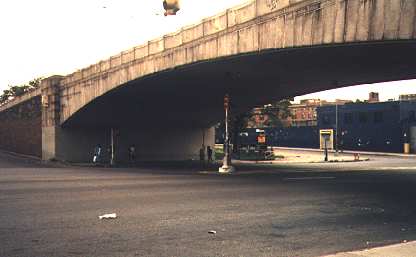





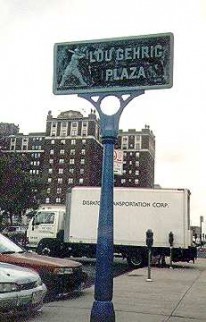


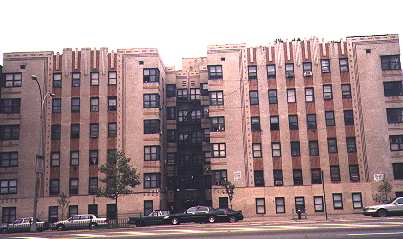
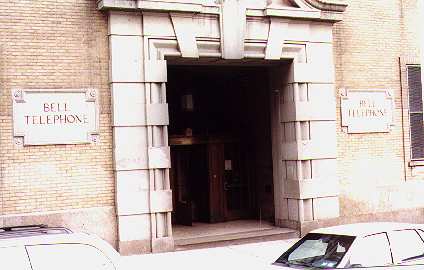




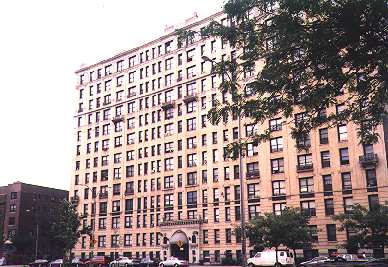
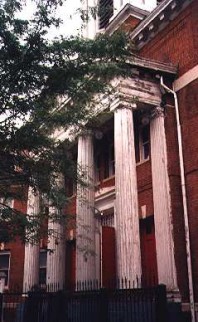
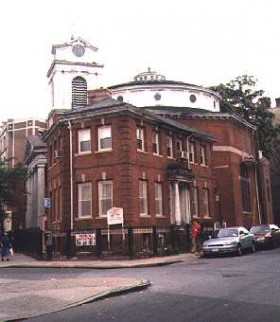


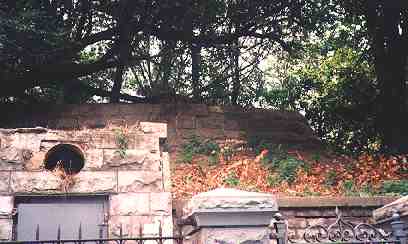
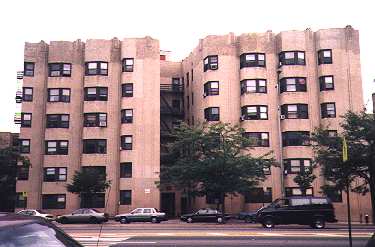




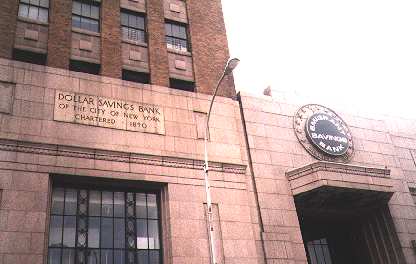


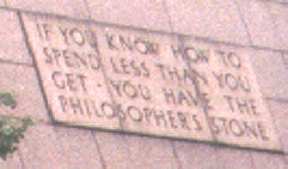
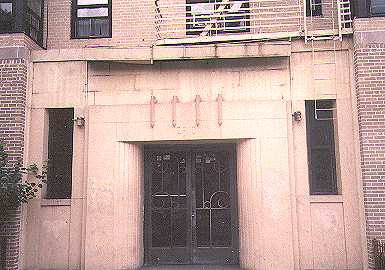
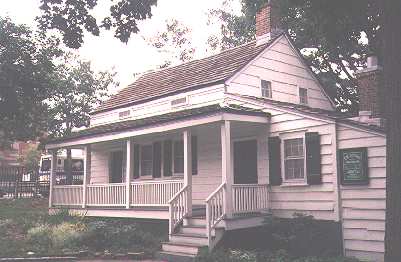

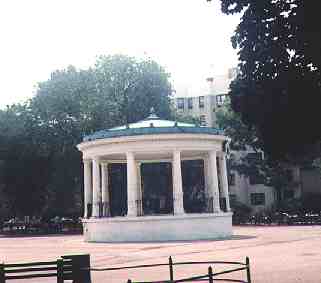
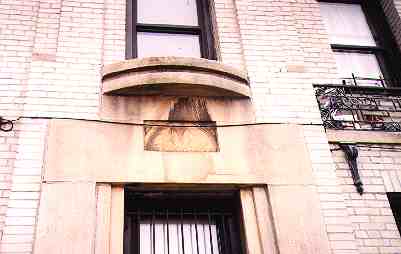



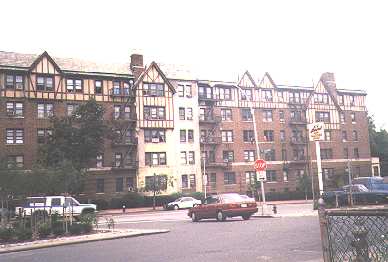
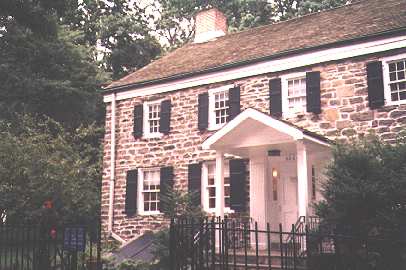
1 comment
[…] I thought this building at 1800 G.C. was a old synagogue, but it was the Pilgrim United Church of Christ, per Forgotten-ny.com. […]
Comments are closed.